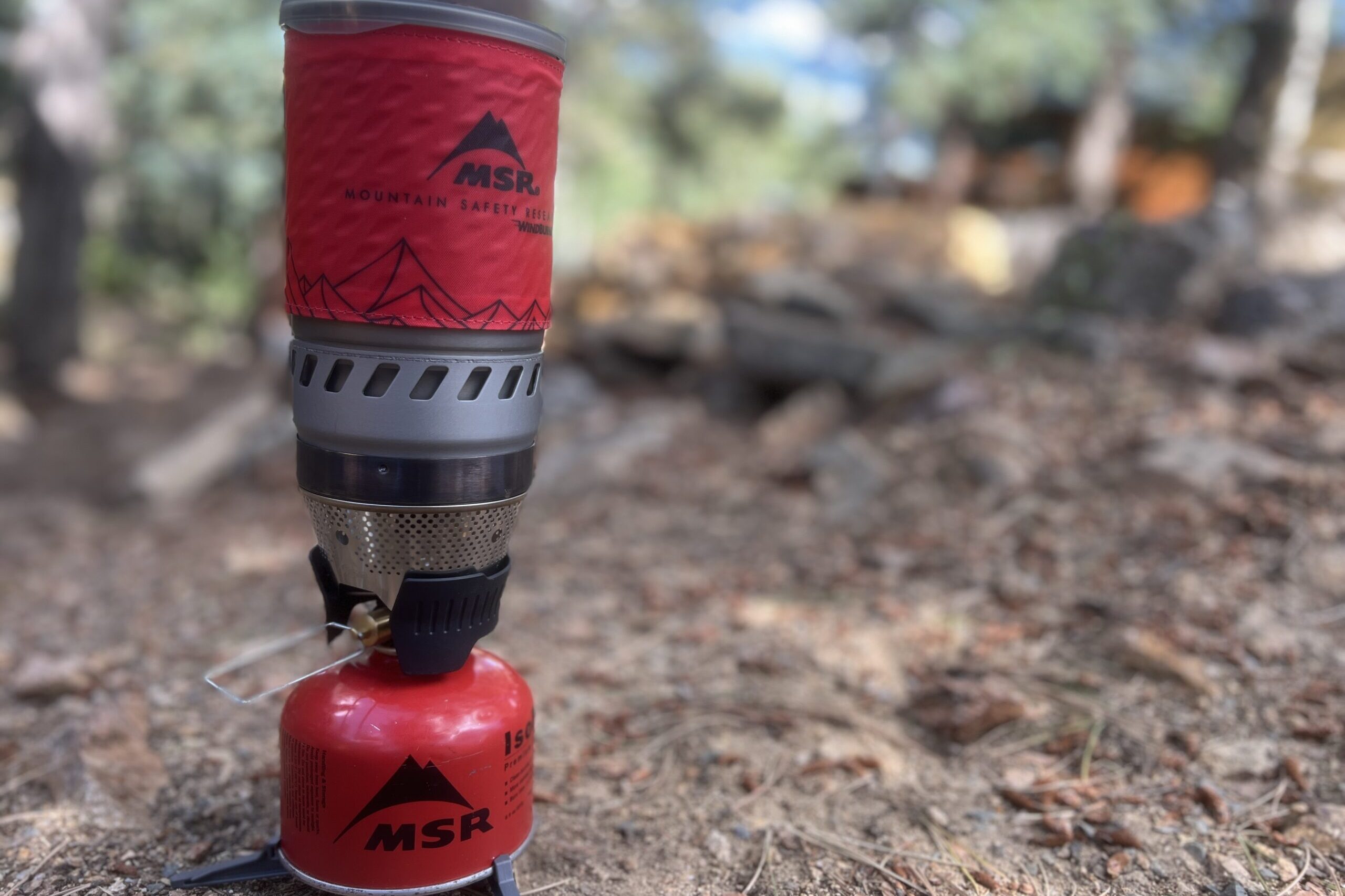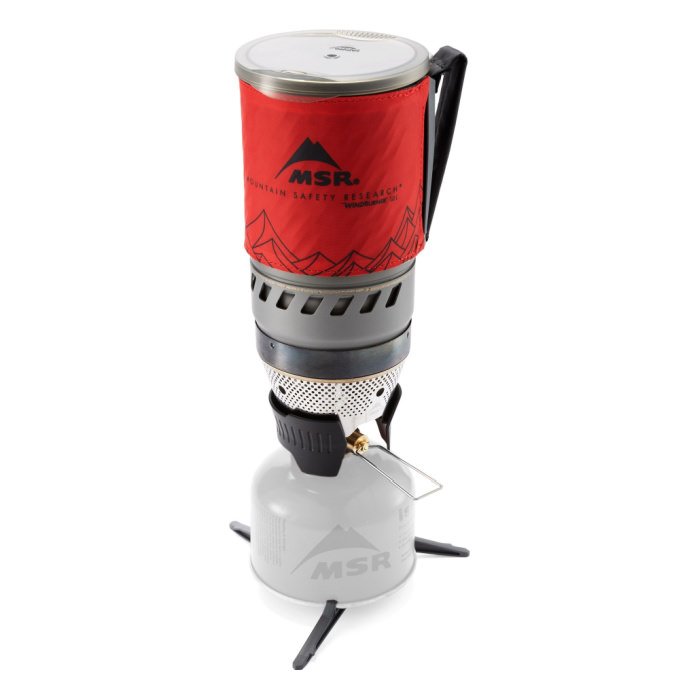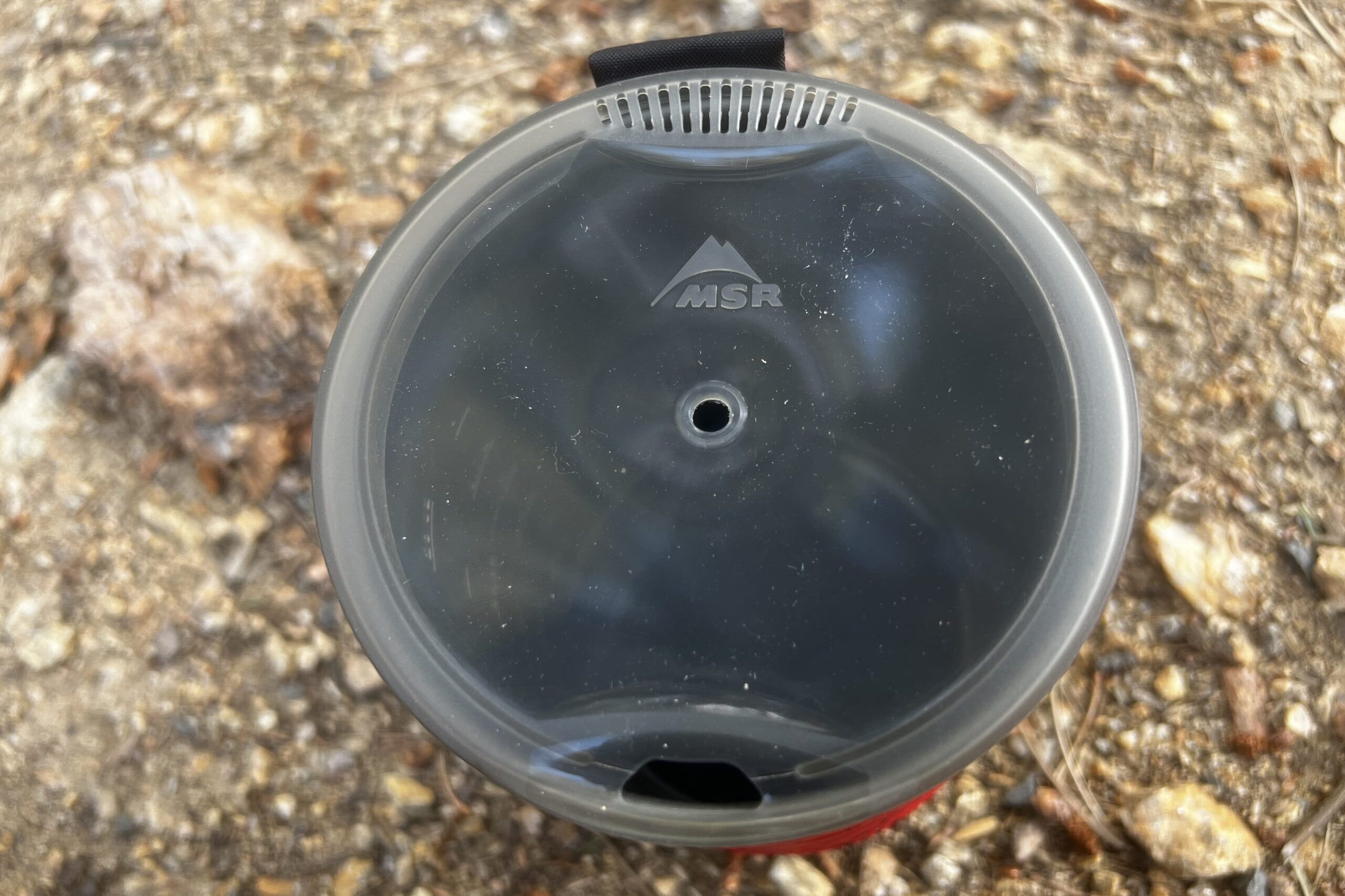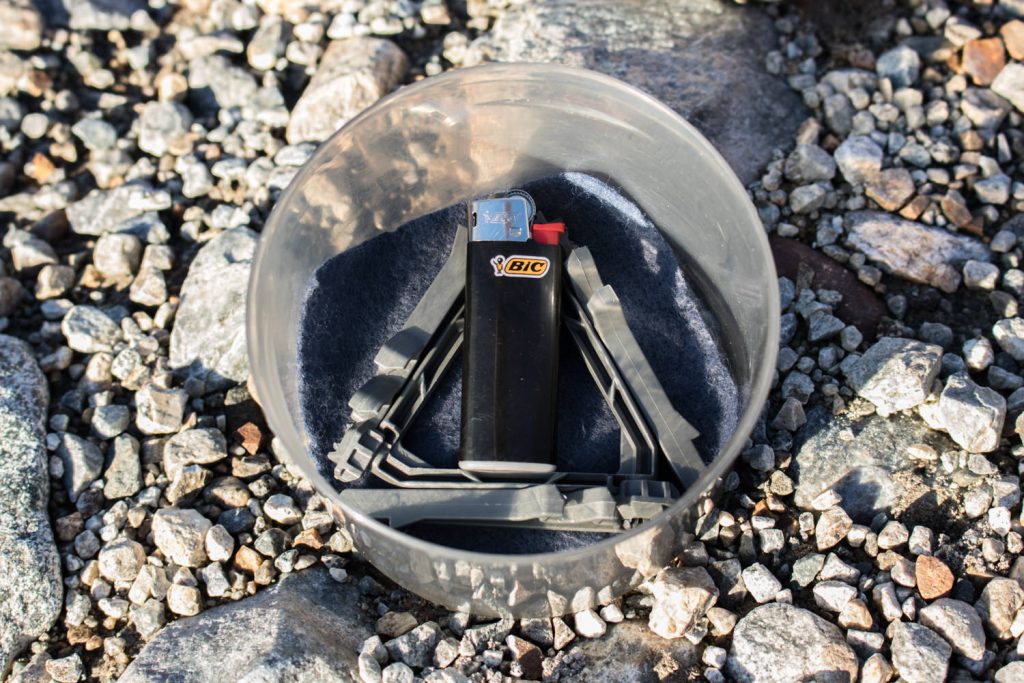
Bottom Line
The MSR WindBurner is among the best-performing integrated canister stove systems on the market. We love its excellent performance in windy weather, its speedy boil time, and great fuel efficiency. We tested it in some of the harshest Rocky Mountain conditions, and it performed reliably every single time.
The WindBurner lacks some key features of other integrated systems like an igniter switch and a studier handle. Those points and of course the fact that it’s not the lightest stove out there are its biggest downsides. That being said, the convenience and durability of the WindBurner are tough to beat and land it a spot among our list of the best backpacking stoves.
Quick Specs

MSR WindBurner
Highly Wind-Resistant Integrated Stove System
CleverHiker Rating: 69.3/100
Price: $190
Weight: 15.3 oz.(Stove & Pot)
Fuel Type: Isobutane/propane canister
Boil Time: 2m 55s
Burn Time (8 oz. fuel): 95m
Pros
- Very fast boil time
- Convenient
- Very fuel efficient
- Excellent wind performance
- High quality materials & durability
Cons
- No push button ignitor
- Handle not as sturdy as we would prefer
- Relatively expensive
- Heavier than some ultralight stove options
- Pot lid can be difficult to remove after boiling & leaky when pouring

Convenience
The WindBurner is easy to use and durable. This stove system feels very secure and the materials are strong and long-lasting.
Typical for most Integrated stove systems, the WindBurner comes with a three-pronged plastic stand for increased stability. However, we rarely bring ours along as we find that the WindBurner is usually stable enough on its own.
The WindBurner comes with measurement notches on the inside of the pot, though we found these to be less accurate than the included measurement cup, which also serves as a bowl and bottom lid. We mostly use the WindBurner for two people and find its one-liter capacity is sufficient.
The pot lid on the WindBurner fits securely and holds strong, but we do wish it was easier to remove after boiling water. There’s only a small tab on the side to grab. Also, the WindBurner’s lid has two spouts for pouring/draining liquid, but in our experience the lid tends to leak, making pouring through the lid nonideal.
Unfortunately, the WindBurner does not have a push-button igniter, which is a convenience we generally like in stoves. We always carry a small Bic lighter with the WindBurner and it’s an easy stove to light, so this isn’t a huge deal, but we would prefer a push-button igniter.
The handle on the WindBurner is a little flimsier than we would prefer, though it does get the job done. It’s made with a hard plastic piece and a nylon strap. It functions okay, but we generally prefer stoves with sturdy metal handles.

Weight & Packability
The WindBurner is the heaviest of the integrated stove systems that we tested. The burner and pot together come in at a combined weight of 14.7 ounces. It’s typical for integrated systems to be on the heavier side, and comparable stoves only weigh about an ounce less.
All the WindBurner components, including a separately purchased small fuel canister, nest together nicely in the pot to make it easy to pack away. They actually fit so snuggly that it creates less rattle inside the pot compared to other integrated stove systems.

Power & Efficiency
The WindBurner has some of the fastest times of any stove system we’ve tested. In our testing, it took, on average, 3 minutes and 30 seconds to boil one liter of water, which is faster than the listed 4 minutes and 30 seconds. We always appreciate fast boil times, especially after a long day of hiking.
The WindBurner’s performance in high winds is excellent and we consider it among the best stoves we’ve ever used in windy conditions. In fact, we used this stove for a month in Patagonia, an area famous for its intense winds, and we never had a single problem.
The burner, secure connection, and wind performance of this stove lead to an incredibly efficient cooking system. Boiling a pot of water uses a minimum amount of fuel (0.2 ounces) and the integrated pot system ensures that even strong winds won’t affect your cooking time. This is a big plus for the WindBurner.

Precision
Unsurprisingly, the WindBurner has some of the best simmer control of the stoves we tested. The valve control knob feels smooth and allows you to make minute changes to your heat output from a full boil to a gentle simmer. Because the stove is locked up so tightly, you don’t have to worry about wind blowing out your flame on even the smallest simmer setting. The simmer control could be put to better use if the pot had a wider base, but it still works remarkably well. We love the ability to keep our meal warm in winter conditions without it burning to the bottom of the pot.

Should You Buy the MSR WindBurner?
Although not an ultralight option, for backpackers who want the absolute best cooking performance that a backpacking stove can offer, the WindBurner is a home run. Everything works exactly how you want it to. We love how durable the WindBurner feels, how easy it is to use, and how it makes the most out of each fuel canister.
As far as integrated stoves go, the WindBurner is among the more expensive models, but it’s also among the highest-quality options. There are more budget-friendly stoves out there, but for a quality system that can withstand years of backcountry use, we think the WindBurner is fairly priced.

What Other Backpacking Stoves Should You Consider?
JetBoil Flash Review: The JetBoil Flash is very similar to the WindBurner in size, weight, and function but with a more budget-friendly price tag.
JetBoil MiniMo Review: Also an integrated stove system, the MiniMo is more centered around “real” cooking in the backcountry. While its simmer control isn’t quite as good as the WindBurner’s, it has a wider pot for cooking and a sturdier handle for pouring.
Primus Essential Trail Review: The Primus Essential Trail gets you about as close to an integrated setup without the high price tag. You get comparable durability, stability, and decent performance for such an affordable stove. It’s also a lot lighter when paired with a titanium pot.




